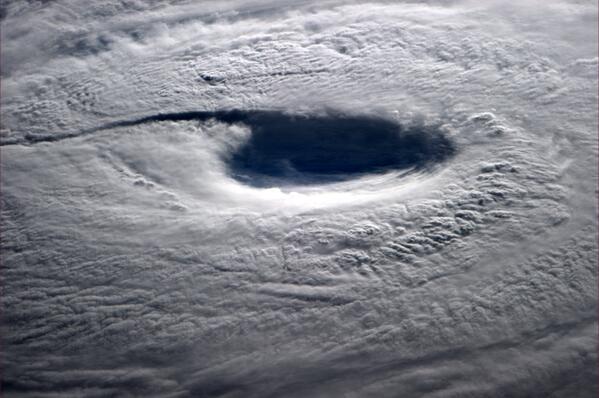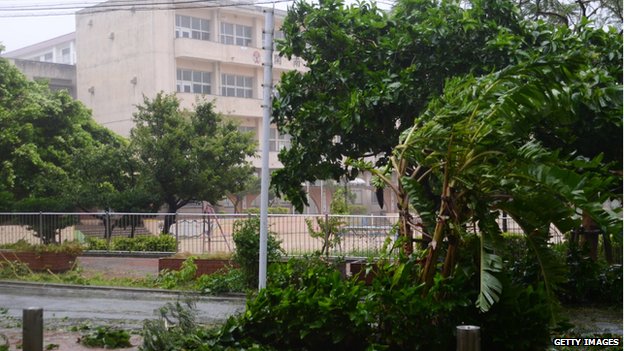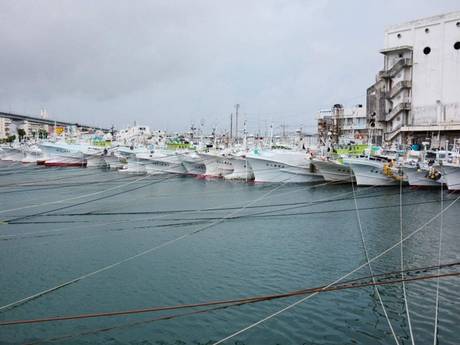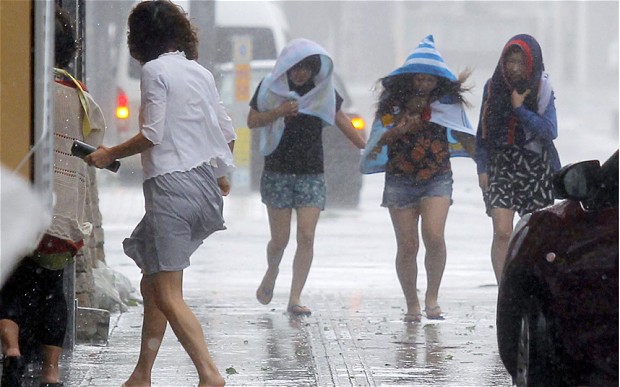Japan Braces For Its Worst Storm As It Issues Highest Alert Over Super Typhoon Neoguri
Japan is bracing for one of its worst storms in over a decade as 'typhoon Neoguri' barreled towards the southern Okinawa island chain, with 55,000 people urged to evacuate as the weather agency issued its highest alert.
Over 50,000 People Have Been Urged To Seek Shelter As Powerful Typhoon Neoguri Passes Over Japan's Okinawa's Main Island Later On Tuesday, With Strong Winds And Torrential Rain
The intense storm has been called a “once in decades” event, bringing with it dangerous wind and rain. NASA astronaut Reid Wiseman, who is currently stationed on the International Space Station, captured this stunning but scary photo of the eye of the super storm from space and tweeted it today.
Image via twimg.comJapan braced itself on Tuesday for one of its worst storms in recent years as typhoon Neoguri barrelled towards the southern Okinawa island chain, with the national weather agency issuing its highest alert and nearly half-a-million people urged to take shelter
telegraph.co.ukThe Top-Level Warning Means A Threat To Life, As Well As The Risk Of Storm Surges, Landslides And Massive Damage From The Typhoon Packing Gusts Of Up To 155 Miles Per Hour
The Japan Meteorological Agency issued the alert for Okinawa's main island, home to around 1.2 million people, late on Monday, as well as the outlying Miyako islands.
Waves could reach as high as 45 feet, a weather agency official said, as schools across the sprawling archipelago south of Japan's main islands were closed while air and sea traffic services ground to a halt.
About 6,500 Okinawan households had no power early on Tuesday.
telegraph.co.ukFlights Have Been Cancelled And Schools Shut. Local TV Footages Showed Palm Trees Being Tossed By Wind.
"There is a risk of unprecedentedly strong winds and torrential rains. Please refrain from non-essential outdoor activities,'' Japan Meteorological Agency (JMA) spokesman Satoshi Ebihara told a news conference on Monday night. Local authorities urged some 480,000 residents across Okinawa to stay at home or move to community centres for shelter.
As of 12:00 local time (04:00 GMT), Typhoon Neoguri was reported to be heading north at a speed of 25 kilometres per hour (15 mph), with gusts of up to 252 kilometres per hour (151 mph), Kyodo news agency reported.
in.comLocals Have Been Bracing Themselves For Rough Weather. An Okinawa Resident Said That The Most Of The People Who Needed To Evacuate Had Done So Already, BBC Reported.
"Right now we do have a lot of wind and rain," she said. "We have showers coming in and gusts in my area are at about 143 kilometres per hour right now so it is definitely a dangerous situation."
Okinawa Comprises Several Islands And Is Home To Major US Bases. Around 26,000 US Troops Are Stationed There Under A Long-Standing Security Alliance.
Fishing boats moored at Tomari port on Japan's southern island of Okinawa as super typhoon Neoguri approaches.
Image via independent.co.ukOfficers have evacuated some aircraft from Kadena Air Base in preparation for Typhoon Neoguri's arrival. Lieutenant Erik Anthony, near Kadena Air Base, said winds were starting to pick up.
in.com"Trees are bending and you can see branches flying across the street, garbage and trash rolling down the road," he told the BBC. "But I haven't seen any major damage as of yet and the communication is still up, which is a huge priority here on Okinawa.
The Storm Comes Less Than A Year After Typhoon Haiyan, Which Packed The Strongest Winds Ever Recorded On Land, And Killed Or Left Missing More Than 7,300 People As It Tore Across The Central Philippines In November 2013
"There are fears about violent winds, high waves and tides and torrential rain that we have never experienced before," Satoshi Ebihara, the Japanese weather agency's chief forecaster, told an evening news conference on Monday.
telegraph.co.uk"We are in an abnormal situation where serious danger is imminent," he said, advising Okinawans to stay in secure buildings or seek out a safer location if they fear their homes could not withstand the powerful storm.
Urging Residents To Remain On Maximum Alert, JMA Warned Of The Possibility That Typhoon Neoguri Could Move North To Japan's Main Island Of Honshu
The storm could reach the southern main island of Kyushu as early as Wednesday, with the weather agency warning that the amount of rainfall by Thursday could reach as much as 16 inches, posing a serious risk of landslides and flooding.
telegraph.co.uk



